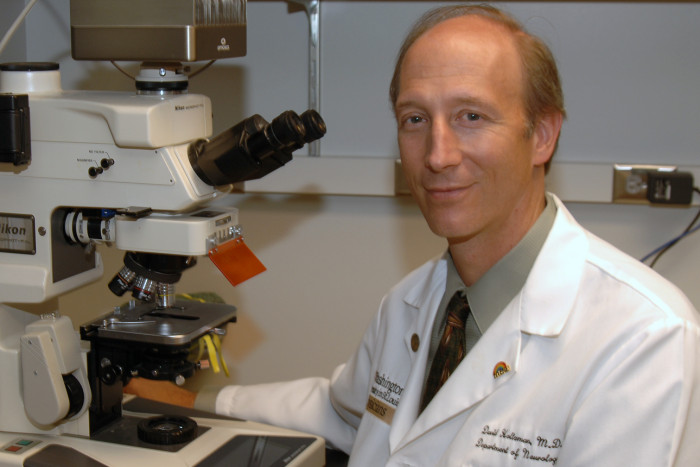Wakefulness protein may be target for Alzheimer’s prevention
A protein that stimulates the brain to awaken from sleep may be a target for preventing Alzheimer’s disease, a study by researchers at Washington University School of Medicine suggests

Neurology department chief David Holtzman, MD, is looking for targets that may help prevent Alzheimer’s disease.
In recent years, scientists at Washington University have established links between sleep problems and Alzheimer’s. For example, they have shown in people and in mice that sleep loss contributes to the growth of brain plaques characteristic of Alzheimer’s and increases the risk of dementia.
The new research, in mice, demonstrates that eliminating a protein that stimulates the brain to awaken from sleep—called orexin—made mice sleep longer and strongly slowed the production of brain plaques.
“We should be looking hard at orexin as a potential target for preventing Alzheimer’s disease,” said senior author David Holtzman, MD, chief of the Department of Neurology. “Blocking orexin to increase sleep in patients with sleep abnormalities, or perhaps even to improve sleep efficiency in healthy people, may be a way to reduce the risk of Alzheimer’s.”
Protein’s effect on sleep and plaques
Orexin is made by cells in the brain’s hypothalamus, an area of the brain responsible for hormone production, and stimulates wakefulness.
In the current study, the researchers worked with mice genetically engineered to develop a buildup of amyloid beta protein in the brain, which is characteristic of Alzheimer’s disease. When the researchers bred these mice with mice lacking the gene for orexin, their offspring slept longer and developed only half as many Alzheimer’s plaques, compared with the mice that had the orexin protein.
Low orexin levels are associated with narcolepsy, a condition marked by excessive sleepiness and frequent daytime sleeping spells. The mice with no orexin typically slept an extra hour or more during the 12-hour period when mice with orexin became more active.
When scientists reversed the experiment and artificially increased orexin levels throughout the brain, the mice stayed awake longer and developed more Alzheimer’s-like plaques.
But if the researchers changed orexin levels only in part of the brain—a change that did not affect the amount of time mice slept—plaque levels were unaffected.
“The fact that orexin can only affect plaques when it also affects sleep means we will have to think carefully about how to target it for Alzheimer’s prevention,” Holtzman said. “But the declines in plaque levels that we saw in the mice were very strong, so we’re still very interested in exploring its potential for reducing risk.”
He and his colleagues, including neurologist and first author Jee Hoon Roh, MD, PhD, currently are studying the effects of sleep medications on amyloid beta production and plaque accumulation. The FDA recently approved Belsomra, the first sleep medication that affects orexin, and the researchers hope to assess it or similar drugs in the future.
Clinical trials

In related work, neurologist Brendan Lucey, MD, is working on a clinical study as part of Washington University’s Healthy Aging and Senile Dementia program project grant, now in its 30th consecutive year of funding. He and colleagues are measuring multiple sleep parameters, including sleep efficiency and sleep stages, and correlating them with cognitive function, cerebrospinal fluid biomarkers for Alzheimer’s, and amyloid imaging in adults 65 and older.
In a separate clinical trial, Lucey and fellow neurologist Randall Bateman, MD, are investigating whether changing sleep by either deprivation or taking Sodium Oxybate, a sedative, affects concentrations of the brain protein amyloid beta compared to control subjects.






